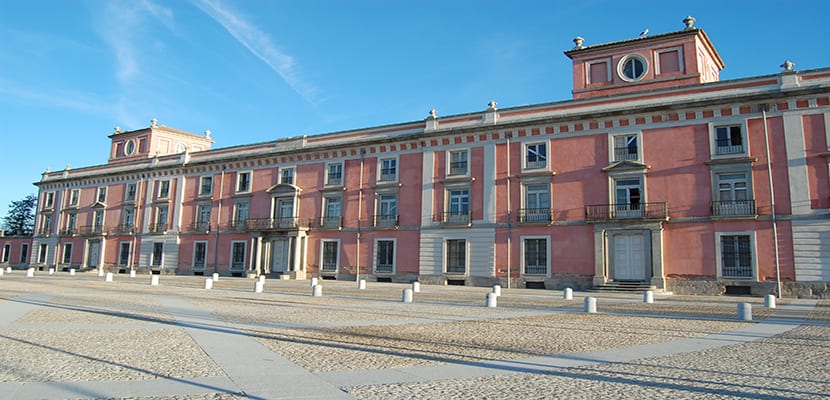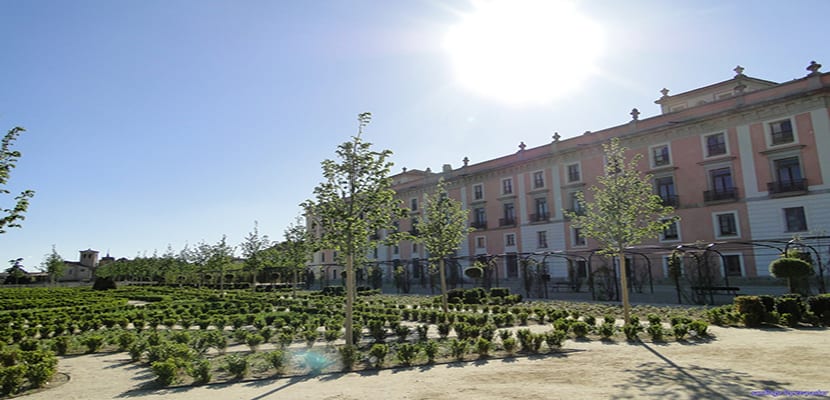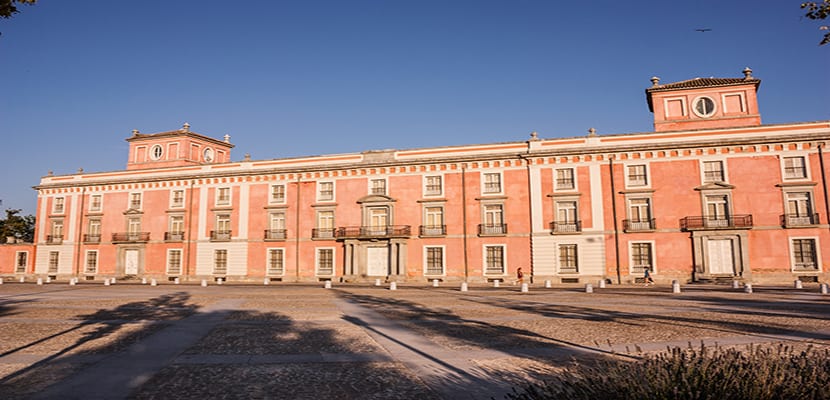
One of the most unknown Spanish monuments is the Palacio del Infante don Luis in Boadilla del Monte. It is located near the historic center of the Madrid town a few meters from the capital and since 2011 it has been restored to restore the splendor that centuries ago it had.
While waiting for the work to be completed, for the moment the Town Hall of the municipality has organized concerts and theater festivals during the summer in the gardens of the complex and at the same time a space for restoration has been put out to tender abroad.
What can we visit when the Infante Palace is completely restored? Next we will discover a little better in this beautiful palace.
Origins of the Palace of the Infante don Luis
The Infante Don Luis, sixth scion of King Felipe V, bought the Señorío de Boadilla del Monte from the Marquise de Mirabal in 1761 to build a palace in the late Spanish Baroque style.
Despite his income, the Infante Don Luis did not own any property whose descendants could inherit. For this reason, in 1760 he made the decision to form his own patrimony and agreed to acquire the mayorazgo that the Marquis of Miraabal had in Boadilla del Monte when they learned of the economic difficulties they were going through.
The town of Boadilla del Monte suited him because it was close to the Court and the county of Chinchón, owned by his brother the Duke of Parma, which he would later also buy.
At the beginning of 1764 the Infante Don Luis commissioned Ventura Rodríguez to build the palace of Boadilla del Monte, taking advantage of the existing palace (which was known as the Palace of the Two Towers). The new and current palace has an elongated rectangular floor plan of 17 × 80 meters and an area of more than 6.300 square meters.

Image | Flickr Santiago López Pastor
Characteristics of the Palace of the Infante don Luis
The building of regal proportions and extensive gardens can be considered as a jewel of neoclassical architecture and one of the few remaining examples in Spain of a total organization of the rural and the architectural. The unevenness of the land is used to build beautiful terraces divided into impressive Italian-style staircases.
In its time, the garden had fountains such as the Fuente de las Conchas (currently in the Campo del Moro gardens of the Royal Palace of Madrid). It remained in the gardens of the Palace of the Infante don Luis until the Dukes of San Fernando gave it to King Fernando VII.
The palace was the main residence of the Infante Don Luis, from its construction until his marriage in 1776. Throughout his life there he gathered a rich gallery, a library, as well as furniture, watches and other valuable objects.
In fact, until the arrival of the Spanish Civil War, the palace had a large gallery that had works by Francisco de Goya, Brurghel, Rembrant, Murillo, Velázquez or Durero, among others.

With the arrival of the conflict, the building suffered great deterioration that affected its construction. Later it was given different uses as a hospital, jail, barracks and nursery school for girls dependent on the Social Aid. It was not until 1973 when it was returned to its owner, a descendant of the Infante Don Luis.
Soon some restoration works began but the lack of subsidies and the cost of maintenance ended up seriously deteriorating the construction and the gardens. It was of little use that in 1974 the Palace of the Infante Don Carlos was declared a national monument.
In 1998 the City Council bought the building from the heirs of the Rúspoli family, Marquises of Boadilla. Years later cNew fence work began and the palace and its gardens were opened to the public. In the first half of this year, 40.000 people have visited it and 20.000 have accessed its gardens. You can also do free guided tours in addition to free access.
Restored areas of the Palace
To date, the exterior walls and side gates have been rehabilitated in the Palace, the perimeter wall has been renovated and the chapel, the main lobbies and the music room have been renovated inside.
In addition, the first terrace of the garden has been restored, returning it to the original look designed by Ventura Rodríguez. The surroundings of the palace where the Old Schools have been converted into an environmental classroom has also been renovated.
The next step is to rehabilitate the orchards. With many of its elements already renovated, the Nacedero viewpoint, the pond and the waterwheel remain to be rehabilitated. Projects in which the City Council has been working for two years and which will gradually be carried out in the coming months.
How to organize the visit?
Those of you who are interested in visiting the Palace of Don Luis de Boadilla del Monte should know that There are free guided tours organized by the Boadilla del Monte Historical Heritage and the Infante Don Luis Palace. To do this, you must contact the Department of Tourism by phone: 91 602 42 00 ext .: 2225.
Visiting hours
Since its inauguration, the gardens can be freely accessed.
- In Summer: From April 1 to September 30: From Monday to Sunday: From 10,30 to 22 hours
- In Winter: From October 1 to March 31: From Monday to Sunday: From 10,30 to 20 hours.
On Wednesdays they will be closed for maintenance.